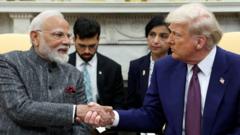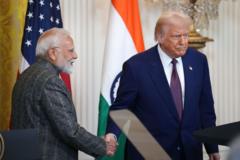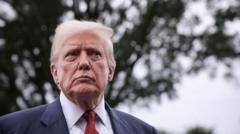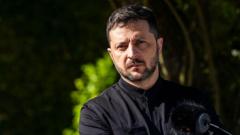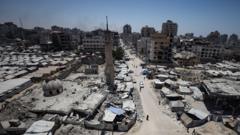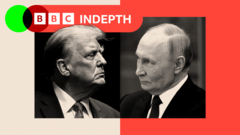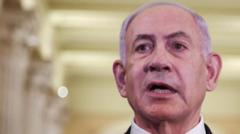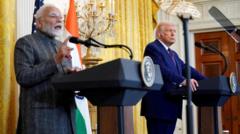The number of drone and missile strikes from Russia has more than doubled since Donald Trump's inauguration, though his administration has faced criticism for its perceived leniency towards Russia and delays in military aid to Ukraine. Concerns grow over Ukraine's vulnerability amid intensified aerial attacks, alongside calls for increased military support.
Surge in Russian Attacks on Ukraine After Trump's Return to Office
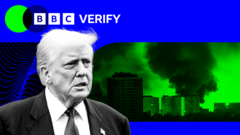
Surge in Russian Attacks on Ukraine After Trump's Return to Office
A recent analysis reveals that Russian military assaults on Ukraine have escalated significantly since Donald Trump took office as president in January 2024.
Russian aggressions against Ukraine have experienced a dramatic surge since Donald Trump resumed the presidency in January 2024, according to a detailed analysis by BBC Verify. Despite Trump's rhetoric advocating for a swift end to the conflict, recorded drone and missile strikes from Moscow have skyrocketed, marking peaks not seen during the conflict prior to his election.
The data highlights a stark increase in aerial attacks, with over 27,158 munitions launched between Trump's inauguration on January 20 and July 19, contrasted with just 11,614 in the latter half of former President Joe Biden's term. The wartime landscape began to shift during the Biden administration but noticeably worsened with Trump's return to power following his election victory in November.
Although Trump previously asserted that a president respected by Russia could have averted the conflict, his administration has drawn scrutiny for what critics label favoritism towards Moscow. In an apparent effort to promote peace, the White House has temporarily halted deliveries of critical military supplies to Ukraine twice, a decision that was subsequently reversed but left Ukrainian defenses in a precarious state.
As the conflict rages on, claims from White House officials suggest that the ongoing war stems from Biden's shortcomings, while arguing Trump aims to halt the violence. Notably, Trump's initial approach featured conciliatory language towards Russia, coinciding with a temporary dip in attacks, but this trend reversed as talks between US officials and their Russian counterparts did not yield the desired results.
The concerning escalation peaked on July 9, when Russia launched a staggering 748 attacks in a single day, resulting in casualties among Ukrainian civilians. The intensity of the assaults has left many Ukrainian residents, such as journalist Dasha Volk from Kyiv, living in a constant state of fear. Every explosion signals an ongoing threat to their safety and sanity.
Critics, including Senator Chris Coons, assert that Trump’s fluctuating stance on military support may have empowered Russia, leading to increased aggressiveness against Ukraine. The calls for urgent US military assistance, especially in the form of advanced air-defense systems like the Patriot batteries, have grown more pronounced as Russia ramps up its production of drones and missiles.
Moreover, Ukraine's military intelligence indicates Russia's missile production has now reached alarming levels, further complicating the situation. To counter the increasing barrage, experts stress the necessity of a robust and consistent US policy towards Russia, alongside unwavering support for Ukraine.
As the war drags on and impacts daily life in Ukraine deepen, public morale wanes, with citizens grappling with the persistent threat posed by Russian attacks. The path towards peace remains fraught as both nations watch for strategic shifts in international policy and military readiness.


